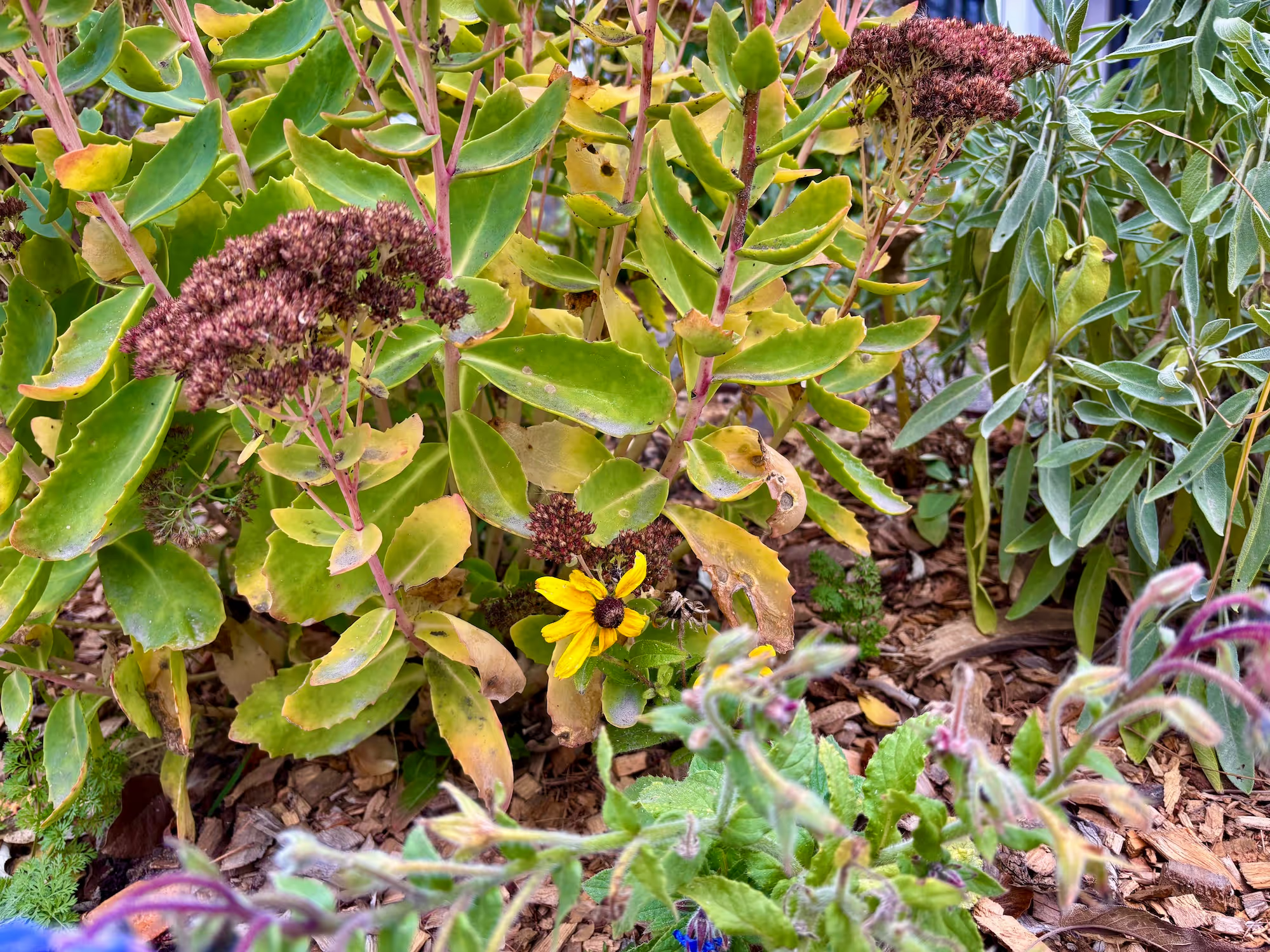As the days grow shorter and the last blooms fade, you might feel the familiar urge to tidy up your garden—raking every leaf, cutting back every stem, and putting the garden "to bed" for winter. But here's the thing: your pollinators are counting on you to resist that urge.
This fall, we're joining the Xerces Society and conservation groups nationwide in encouraging gardeners to embrace a simple yet powerful practice: Leave the Leaves.
Why Your "Messy" Garden Is a Pollinator Paradise
While it might look untidy to us, a garden full of fallen leaves and standing plant stems is actually a bustling winter habitat for the pollinators we'll depend on come spring.
Leaves provide essential shelter. Most butterflies and moths don't migrate—instead, they overwinter right in your garden as eggs, caterpillars, chrysalises, or adults. Luna moths and swallowtail butterflies cleverly disguise their cocoons to look like dried leaves. Great spangled fritillary and woolly bear caterpillars tuck themselves into leaf piles for protection from both predators and harsh weather. Red-banded hairstreak butterflies even lay their eggs directly on fallen oak leaves, which become the first meal for hungry caterpillars in spring.
Native bees need your help too. Did you know that 30% of native bee species are tunnel-nesters? Leafcutter bees, mason bees, and other cavity-nesting species make their homes in hollow plant stems, while bumble bee queens burrow just an inch or two into the soil to hibernate through winter. That layer of leaves acts as a crucial insulating blanket, protecting these queens so they can emerge to start new colonies in spring.
Even your soil benefits. As leaves break down, they suppress weeds, retain moisture, and boost soil nutrition—giving your perennial plants extra insulation while building healthier garden beds for next year.
How to Leave the Leaves (Without Sacrificing Your Space)
You don't have to let your entire yard become a wilderness. Here are some practical ways to support pollinators while keeping your space functional:
Relocate, don't remove. Rake leaves from walkways and areas where you need clear access, but pile them in garden beds, around tree bases, or in a designated corner of your yard. A layer an inch or two thick provides ideal habitat without smothering plants.
Keep leaves whole. Avoid shredding leaves with a mower—you might destroy eggs, caterpillars, and cocoons hidden within them. If you must reduce leaf volume, gentle raking or electric blowing is better than mulching.
Leave the stems standing. Instead of cutting back perennials at season's end, let those stems stand through winter. They provide nesting sites for native bees, and the seed heads feed goldfinches and other birds.
Wait until late spring for cleanup. If you do decide to tidy up, wait until temperatures consistently reach 50°F and after early blooming trees like apple and pear have finished flowering. Many bees don't emerge until late May, so patience pays off.
Planning for Pollinator Success Year-Round
While leaving the leaves is one of the most valuable things you can do for overwintering pollinators, the foundation of a healthy pollinator habitat starts with your plant choices. Native plants have evolved alongside our local pollinators, providing the specific flowers, foliage, and habitat they need to thrive.
That's where planning ahead for next season comes in. Check out our Native Pollinator Garden Planner for New England—a free, easy-to-use resource that helps you select the best native plants for your specific conditions. Whether you're working with sun or shade, wet or dry soil, tall borders or groundcovers, our planner will help you create a garden that supports bees, butterflies, hummingbirds, and other essential pollinators throughout the growing season.
Imagine your spring garden buzzing with mason bees visiting Wild Columbine, summer afternoons watching monarchs lay eggs on Butterfly Milkweed, and fall days filled with bees covering your Mountain Mint. When you combine the right native plants with simple winter habitat practices, you create a true pollinator haven.
It's Easier Than You Think
The beauty of the "Leave the Leaves" approach is that it asks you to do less, not more. Skip some of those fall chores. Enjoy that extra time with a warm cup of cider (courtesy of the pollinators who brought you those apples!). Let your garden rest, knowing you're playing a vital role in your local ecosystem.
Your yard isn't just your personal space—it's part of a larger habitat network that struggling pollinator populations desperately need. By simply leaving the leaves and standing stems through winter, you're providing critical shelter for the very creatures that will pollinate your garden, your neighbor's vegetables, and the wild plants that support entire food webs.
This winter, let your garden be a little wild. Come spring, you'll be rewarded with a yard full of life—and you'll know you made a real difference for pollinators.
Ready to plan your pollinator garden for next season? Explore our Native Pollinator Garden Planner for New England and discover which native plants will thrive in your garden while supporting local pollinators year after year.


